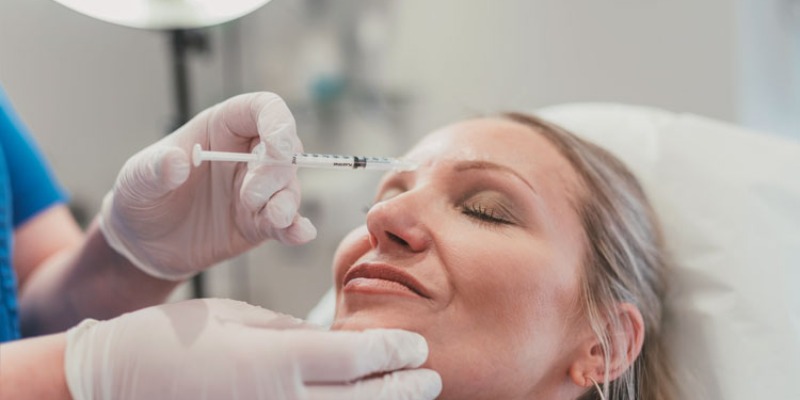Botox (botulinum toxin) is a popular cosmetic treatment used to reduce the appearance of wrinkles and fine lines. It works by temporarily paralyzing muscles, which smooths out the skin on the surface. While Botox is generally considered safe and effective for short-term use, many people wonder about its long-term effects. This Article delves into the details of Botox in Dubai.
Reduced Muscle Movement and Muscle Atrophy
Over time, consistent Botox use can lead to muscle atrophy in the areas where injections are frequently administered. Since Botox works by blocking the nerve signals that cause muscle contraction, repeated treatments may lead to a weakening or shrinking of the muscle. This may cause the muscles in the treated areas to become less active, which can be beneficial for smoothing out wrinkles but may also have unintended consequences, such as:
- Reduced muscle tone: The treated muscles may become weaker over time due to lack of use.
- Changes in facial expressions: If Botox is used frequently in areas like the forehead, around the eyes, or mouth, the muscles responsible for expressions may become less expressive over time.
However, this is not a permanent effect, and the muscles typically regain their normal function once Botox wears off.
Dependence on Botox for Aesthetic Results
Some users may develop a psychological or aesthetic dependence on Botox due to the satisfaction of smoother skin and more youthful appearance. As Botox is temporary, regular treatments are necessary to maintain the desired results. People may feel they need to continue Botox use to maintain their appearance, which can lead to long-term treatment cycles.
- Emotional impact: Some individuals may experience anxiety or dissatisfaction as Botox effects wear off and wrinkles begin to reappear.
- Cost: Regular treatments can become financially expensive over time, as Botox usually needs to be repeated every 3 to 6 months for consistent results.
Development of Tolerance to Botox
Over time, some individuals may experience tolerance to Botox, meaning the same dosage may become less effective with repeated treatments. This happens because the body may develop antibodies to the botulinum toxin, making it less responsive to future treatments. In these cases, individuals may require higher doses or alternative treatments to achieve the same results.
- Impact: A reduction in the effectiveness of Botox can lead to the need for adjustments in treatment plans or switching to other anti-aging options.
- Alternatives: If Botox becomes less effective, patients may explore other treatments, such as dermal fillers, laser treatments, or microneedling.
Long-Term Skin Benefits
One of the more positive long-term effects of Botox is its potential to prevent the formation of new wrinkles. Regular Botox treatments can help relax facial muscles, which reduces the formation of expression lines that typically result from repeated facial movements (like squinting or frowning). Over time, this may result in:
- Smoother skin: Botox may slow down the formation of new lines and wrinkles, especially for people who start treatment at a younger age.
- Improved skin texture: By preventing excessive muscle movement, Botox can contribute to smoother, firmer skin over time.
Overuse
While Botox is generally safe when administered correctly, overuse can lead to potential complications, such as:
- Drooping eyelids or eyebrows: Incorrect injection technique or too much Botox in certain areas can cause unwanted side effects, such as eyelid drooping (ptosis) or a “frozen” appearance. These side effects are typically temporary but can be distressing.
- Headaches or flu-like symptoms: Some individuals may experience mild headaches or flu-like symptoms after Botox injections. These symptoms are typically short-lived, but consistent use could heighten the risk of recurring discomfort.
To minimize these risks, it is essential to receive Botox treatments from a qualified, experienced professional who understands the anatomy of the face.
Long-Term Impact on Facial Features
Repeated Botox use can cause subtle changes in the way the face appears over time, particularly in terms of facial symmetry and expression. For example:
- Subtle reshaping of the face: Over time, Botox can alter the way muscles contract, which might change how the face moves or how expressions are formed. Some users may notice changes in their smile, eye shape, or overall facial dynamics.
- Loss of natural expressiveness: While Botox can reduce wrinkles, it can also limit facial expression, especially if used excessively in areas like the forehead or around the eyes. This can make someone appear less expressive or even emotionally distant.
Temporary Side Effects
The side effects of Botox are generally temporary, and long-term use is unlikely to cause permanent damage to skin or muscles. Some side effects include:
- Bruising and swelling: These are common immediately after treatment but usually resolve within a few days.
- Redness or irritation: The injection site may become red or irritated, but this typically subsides within hours.
- Pain or tenderness: Mild discomfort or soreness at the injection site is possible but is generally short-lived.
Psychological Effects
For some individuals, Botox treatments can have a psychological impact, both positive and negative. On the positive side, Botox can improve self-esteem by reducing the appearance of aging signs, making individuals feel more confident and youthful. However, excessive reliance on Botox or dissatisfaction with the results can lead to body dysmorphia, where individuals become overly fixated on their appearance.
Conclusion
In the long term, Botox is a safe and effective treatment for reducing wrinkles, preventing new ones, and enhancing facial aesthetics. However, there are potential side effects, including muscle atrophy, the development of tolerance, and the risk of overuse leading to complications like facial asymmetry or unwanted side effects. It’s essential to receive Botox treatments from a trained and experienced professional, follow the recommended guidelines for frequency of use, and be mindful of the potential impact on your facial expressions and muscle strength over time. Regular follow-up appointments with your injector can help ensure that Botox remains a safe and beneficial treatment for your needs.






Comments